

How AI is Revolutionizing Business Productivity: Insights from 100 Professionals
The Impact of AI on Business Productivity: Insights from 100 Professionals
In recent years, artificial intelligence (AI) has evolved from a futuristic concept into an essential tool for business professionals aiming to enhance their productivity. A survey conducted by AI Skills Academy, which has educated over 10,000 participants through its latest AI utilization seminars, sheds light on how 100 business individuals leverage AI tools to streamline their workflows. The study reveals not only the level of AI adoption across different sectors but also three key commonalities among those who effectively utilize AI to drive positive outcomes in their work.
General Overview of Survey Participants
The survey attracted a diverse range of responses, primarily from individuals in their 30s and 40s. Among the participants, men made up 53.7% while women represented 46.3%. The industries most interested in AI tools were the IT and information communication sector, accounting for 32.6% of respondents, followed closely by the service and manufacturing sectors. This indicates a strong inclination towards AI adoption within the IT industry.
Who is Using AI Tools?
The survey results highlighted that the majority of AI tool users were 'general employees' (67.7%), followed by 'executives' (15.4%) and 'managers' (10.8%). This demonstrates that the utilization of generative AI transcends hierarchical boundaries, indicating a broad acceptance and integration of these technologies in day-to-day tasks.
The Dominance of ChatGPT
When asked about the AI tools being employed, a staggering 92.3% of respondents reported using 'ChatGPT' (both free and paid versions), making it significantly more popular than other tools like 'Copilot' (21.5%) and 'Gemini' (18.5%). This underlines that ChatGPT has become a staple in the business environment, surpassing other AI tools in terms of practicality and usage.
Primary Use Cases for AI Tools
The primary purposes for employing AI tools varied, with the top three reasons being: 1) document creation (emails, proposals, reports) at 73.8%, 2) information gathering and research at 53.8%, and 3) idea generation and brainstorming at 50.8%. These findings underscore the versatile applications of AI in supporting mundane yet critical tasks for professionals, including email communication, crafting project proposals, and conducting research.
Specific Use Cases in Internal Operations
The survey details specific instances where generative AI has been effectively utilized:
1. Document Creation: Many respondents reported using AI for tasks like drafting email replies, creating initial drafts for proposals, and formulating social media posts. This has allowed employees to save substantial time, enabling them to focus on core responsibilities.
2. Information Gathering and Research: AI tools significantly improved tasks like market research and competitive analysis. By automating the collection and organization of information, employees experienced remarkable efficiency in their research tasks, which were previously labor-intensive.
3. Ideation and Brainstorming: Employees have turned to AI for generating innovative ideas for business projects, slogans for events, and engaging content for social media. The diverse perspectives that AI provides have helped expand creative thinking and facilitate brainstorming sessions.
4. Summarization and Proofreading: Tasks such as summarizing lengthy reports and conducting double-checks on emails became more efficient through AI assistance. This not only sped up the understanding of complex materials but also improved the accuracy and quality of written content.
Real-World Examples of Time Savings
The survey also highlighted three specific examples of how professionals achieved remarkable time savings using AI tools:
- - Case of Employee A (Service Industry): An employee involved in recruitment tasks used to spend 1-2 hours preparing for interviews by summarizing job descriptions. By employing ChatGPT, the employee reduced this preparation time to just 15-30 minutes, achieving a time saving of around 75% and allowing for better company research.
- - Case of Employee B (Public Sector): A department head faced challenges in creating plans due to the time-consuming nature of industry research. By leveraging generative AI, he managed to condense his research time to a third, or roughly a 67% reduction, allowing him to focus on high-quality analysis.
- - Case of Employee C (Manufacturing): An employee handling technical reports spent substantial time transcribing information into Excel sheets. By using Copilot to automate this process, they successfully cut down their workload by 90%.
Common Traits of Effective AI Users
Analysis of the survey responses revealed three common characteristics among users who excel at leveraging AI successfully:
1. Clear Intentions: A significant number of participants (61.5%) reported starting with a clear goal, typically related to improving efficiency. This clarity has led to effective AI utilization rather than vague attempts.
2. Experimentation: Over 40% started using AI out of curiosity or due to trends among peers, with many expressing surprise at the capabilities of AI tools once they ventured into usage.
3. Skill Development: Successful users often refine their prompting techniques, turning AI into a collaborative partner rather than a mere search tool. This ongoing dialogue develops precision and enhances the quality of AI outputs.
Conclusion
This survey underscores the shifting landscape where generative AI is no longer just a buzzword but has become a critical asset for many business professionals. Particularly in routine tasks such as document creation and information retrieval, AI solutions have led to time savings exceeding 70%. However, fully reaping these benefits necessitates an understanding of AI capabilities and the ability to provide accurate directives, highlighting the emerging productivity divisions between those who can effectively utilize AI and those who cannot.
To cite this survey, please mention: “Source: AI Skills Academy” and include a link to AI Skills Academy.

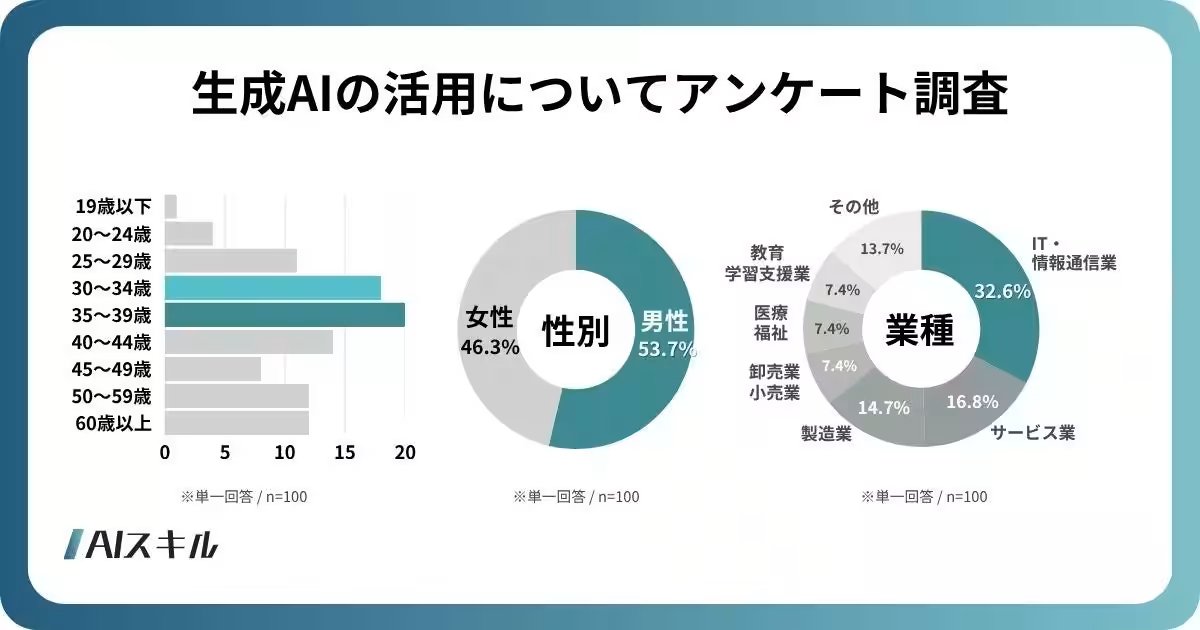

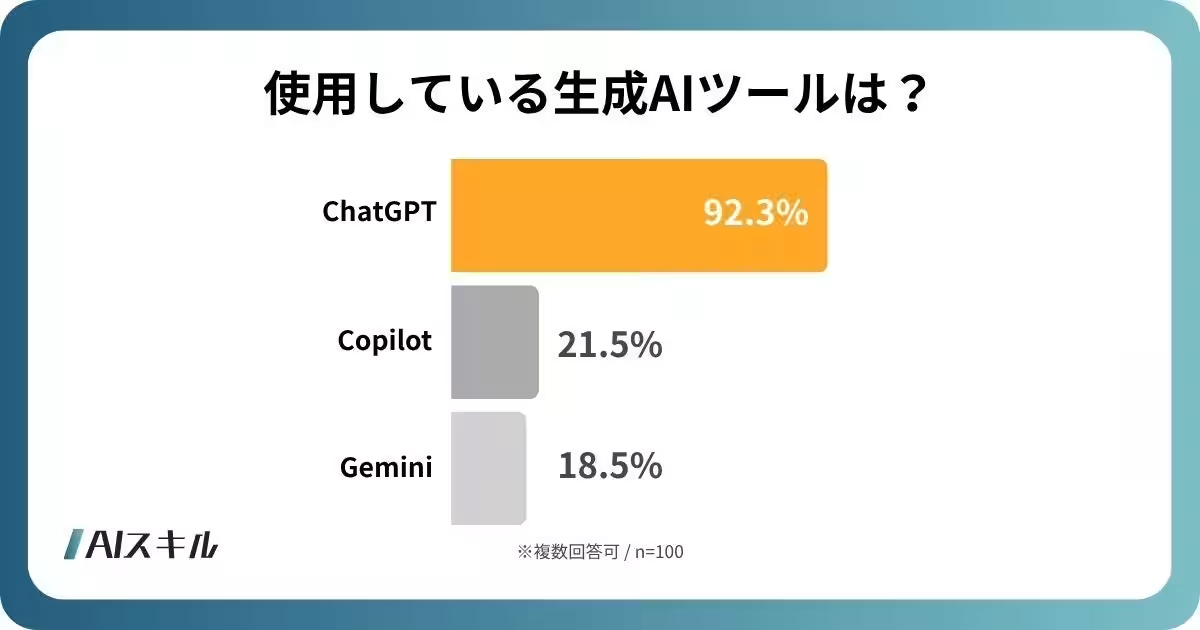
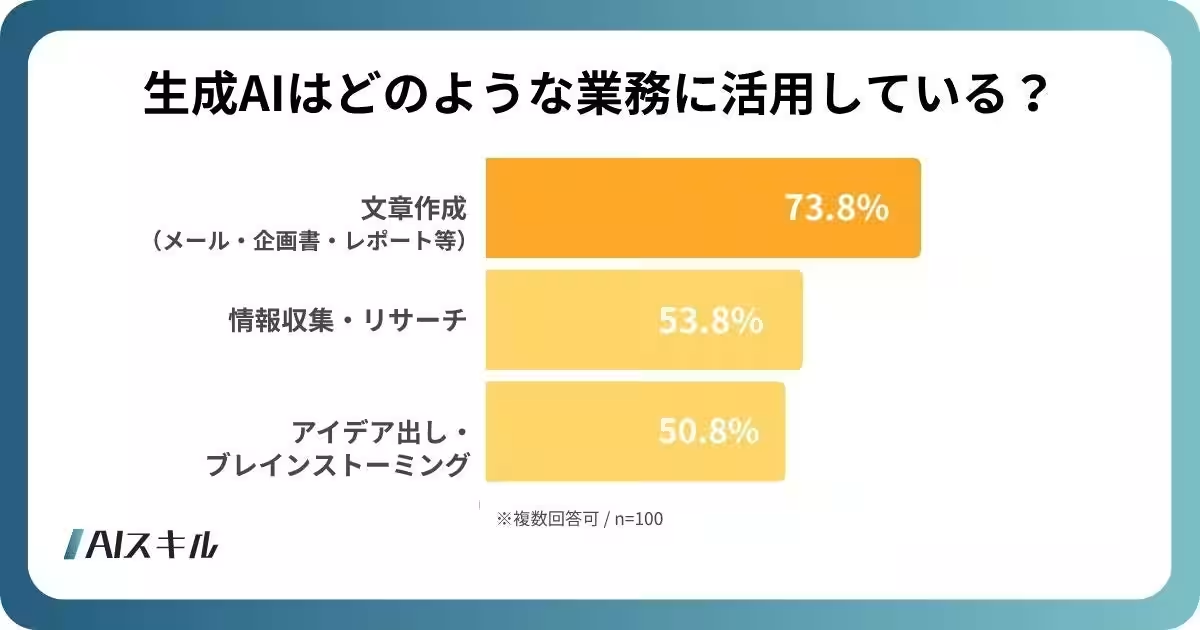
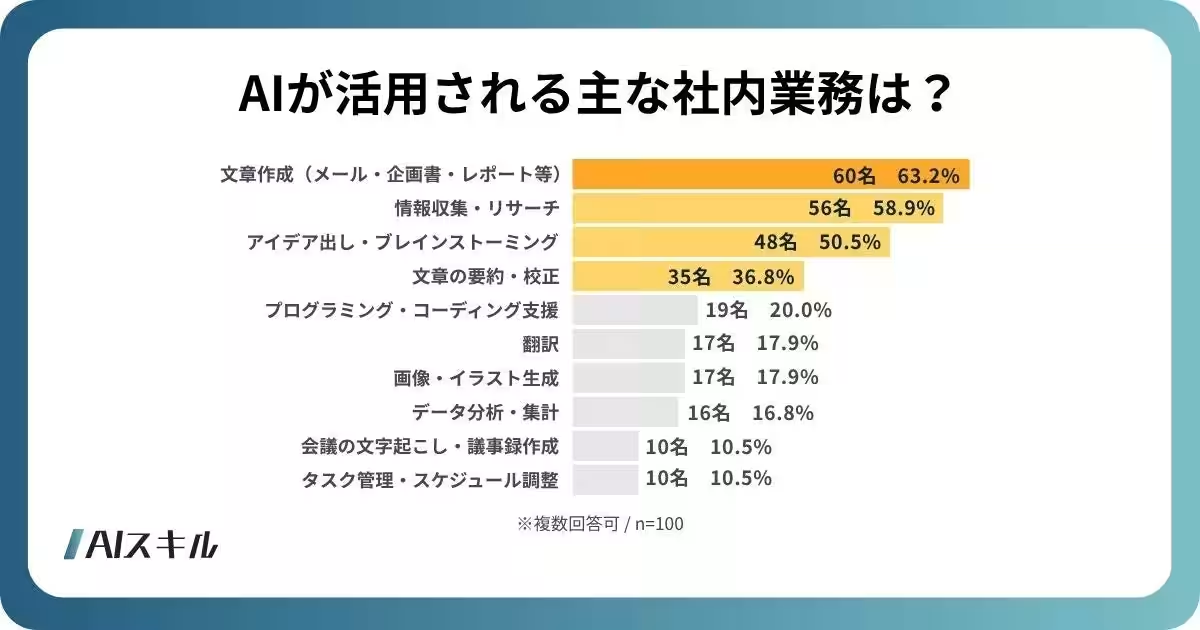
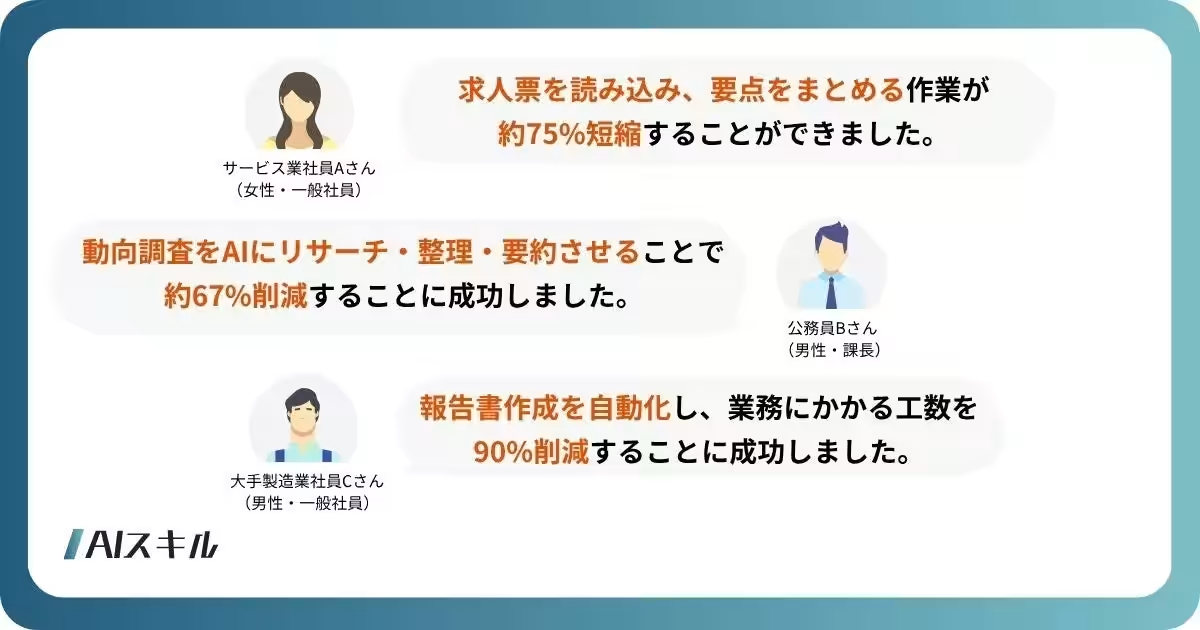

Topics Business Technology)










【About Using Articles】
You can freely use the title and article content by linking to the page where the article is posted.
※ Images cannot be used.
【About Links】
Links are free to use.